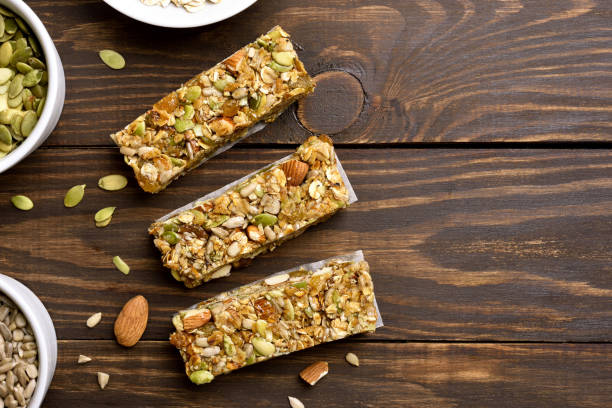In today’s hustle culture, convenience is the mainstay. Ready-to-heat curries and pre-sliced vegetables are now common in supermarket aisles. With a growing awareness about fitness and healthy eating, treats at the point-of-purchase have moved from being primarily candy to offering more nutritious options such as bars. The cult hit Mean Girls was their pop culture success. Regina George only eats a handful of calories per day in order to lose weight. (Kalteen Bars, anyone?)
They come in many options, including whole foods, snacks, energy, snack, fiber, and meal replacement. These are sure to satisfy your daily needs in just a few bites. The most popular of these are those that are labeled protein and energy. These come in a variety of price points and all look similar. You’ll be able to see the differences between them if you put them under a microscope. To see which one is more worthy to be added to our grocery carts, we’re going to have them go head-tohead.
What are protein bars?
Protein bars promise megadoses of micronutrients without the need to eat a large meal. Whole-food bars contain a greater proportion of protein (instead of carbohydrates and fats) and include ingredients such as quinoa and oats, which are rich in amino acids. They also have traditional options such as egg whites or seeds. Popular ingredients include soy, brown rice, pea and whey protein (whole, isolates) as well as plant-based proteins like soy, brown rice, and soy. Yoghurt powder is becoming a more common ingredient. According to the US Department Of Agriculture, protein bars may contain between 10 and 30 grams of protein. They are also lower in carbs, fiber, and micronutrients such as calcium, potassium, and iron.
Protein bars are a convenient source of nutrients for busy fitness enthusiasts. They can help post-workout muscle recovery, replace a meal, prevent overeating, and have a fibre content that helps to keep you full. They last for a long time. They are a popular choice for people who want to lose weight. They can also contain high levels of unhealthy sugar, such as high fructose corn syrup. You might not need to supplement your diet with protein bars, given that most people consume sufficient protein every day. A few exceptions to this rule are athletes who often eat protein bars because their intake of the nutrient exceeds the general population. This is for muscle hypertrophy.
What are energy bars?
These bars, which often contain whole ingredients such as oats and nuts, seeds, fruits, grains, and seeds, promise quick bursts in energy. Like protein bars, they may also have added nutrients. They come in a variety of flavours from chocolate to matcha. They are high in carbohydrates with the typical values around the 20-40 range. Each serving contains lower amounts of protein, fat, or nutrients.
They are great for fighting malnutrition and can also be used by athletes to boost their energy for running marathons or other high-energy events. To help with extra reps, fitness enthusiasts will often eat one before their workout. These are great healthy snacks for busy people who are always on the move. It’s important to avoid sugary and unhealthy options.
Energy bars vs protein bars: Key differences and similarities
It is clear that protein bars are best for people who need to supplement with micronutrients in high doses. Energy bars, on the other hand, can be used to provide a boost of energy to prevent exhaustion or sugar crashes. There are some similarities and differences that you should be aware of.
- Ingredients Protein and energy bars both contain nuts, seeds, grains honey, chocolate, and other ingredients. The former will likely contain protein isolates and other rich ingredients, while the latter uses carbohydrates to provide energy.
- Nutritional Value: Energy bars are high in carbohydrate and calories, but protein bars are low on calories and carbohydrates. Both bars contain a variety of micronutrients that will keep you satisfied for a long period.
- The best time to eat: Experts recommend eating a protein bar 30 minutes after strength training to repair muscle and build lean mass. Energy bars can be eaten anytime, whether it’s between meals or 40 minutes before going to the gym for a satisfying workout. Both can be used as meal substitutes.
- Benefits: Energy bars and protein bars are great for building muscle, while energy bars provide quick energy boosts. Both can help with weight loss, provided that they are eaten in the right way and at the right time.
- Drawbacks Protein bars and energy bars can contain high levels of added sugars, making them not a healthy option. These bars might also contain unidentified ingredients, which is not a good idea for someone who eats a balanced diet.
You can make your own bars, but that’s just for convenience. While they require some preparation, you can pick the right ingredients to suit your lifestyle and dietary needs. You won’t be consuming too many calories or sugar.



